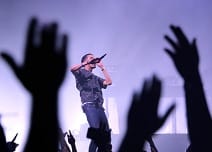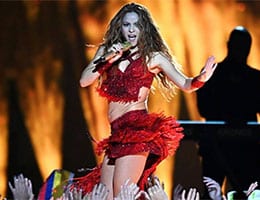 The notion of playback has its origins in the English language. Also mentioned as play back , it refers to the reproduction , within the framework of a concert or show , of music that was previously recorded .
The notion of playback has its origins in the English language. Also mentioned as play back , it refers to the reproduction , within the framework of a concert or show , of music that was previously recorded .
A playback artist therefore moves his lips as if he were singing , when in reality what the audience hears is a recording . Likewise, musicians can pretend to play their instruments live while an already recorded sound is played.
Playback, in short, is a simulation . This is a common resource in television programs, where a concert is usually staged with the presence of soloists or musical bands that “act” their role.
For the playback to be successful, it is essential that there is precise synchronization between the actions and the recording. Whoever sings must move his lips simultaneously with what is expressed in what is recorded, and the musicians have to be attentive to their own participation.
Many times the playback is a deception . There are those who pay a ticket to listen to their favorite artists live but end up attending a playback session because the protagonist has problems with his voice , does not know the songs or another reason.
On television, playback by singers and bands can be forgiven on certain occasions; for example, if the stage characteristics given to them do not meet their acoustic requirements to produce good sound . In fact, television producers often "force" their guests to use recordings because they do not give them the opportunity to organize themselves before the presentations.
 We must not forget that performing a song live with electronic instruments and amplification requires several hours of prior work by different professionals, to fine-tune the volume levels of the microphones and headphones, tune the instruments, place them on stage and Do at least one test. If there is not enough budget for all this, or if the artists are not given enough time to prepare, then playback is preferable to a low-quality show.
We must not forget that performing a song live with electronic instruments and amplification requires several hours of prior work by different professionals, to fine-tune the volume levels of the microphones and headphones, tune the instruments, place them on stage and Do at least one test. If there is not enough budget for all this, or if the artists are not given enough time to prepare, then playback is preferable to a low-quality show.
Beyond music , playback resources are frequent in the field of cinema . It is common that, in the post-production stage, dialogue is re-recorded and added through lip synchronization. Animated films and dubbing work also use techniques of this style. In these cases, however, we do not usually talk about playback.
With respect to songs and other musical pieces that appear in films, it is also very common for them to be recorded in a studio, edited, and only then are the scenes in which the characters perform them filmed, even if the actors do nothing other than playback on his recordings. In this case there is also another possibility: that the musicians are not the actors, which makes the need for playback even greater.
In a film , playing back a musical scene is not considered a deception or a negative practice; On the contrary, since filming sessions are often exhausting and there are usually multiple takes of each part, it would be abusive to require actors to perform their parts every time a scene is filmed. This does not mean that some directors may opt for this requirement: in the film Les Misérables , based on the book of the same name by Victor Hugo, the actors were forced to actually sing during filming, regardless of the conditions to which they had to submit (such as being with half the body submerged in the water).
